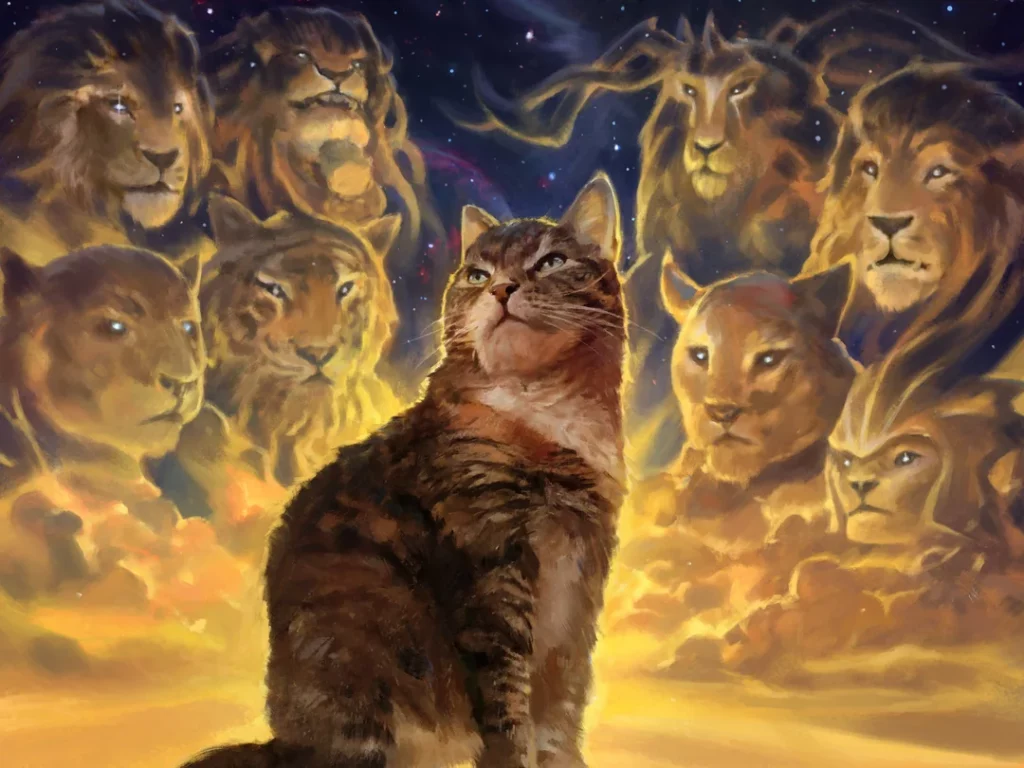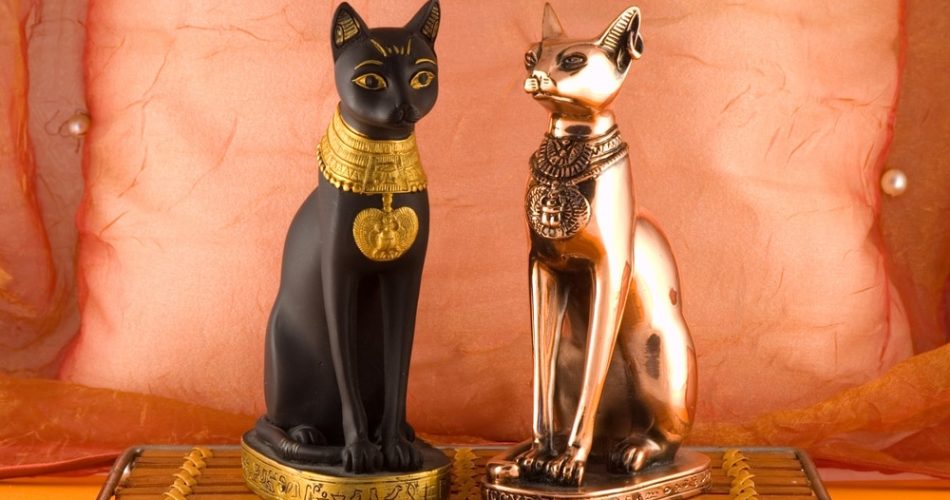The myth that cats have nine lives is one of the most enduring beliefs associated with these mysterious creatures. It has been passed down through generations, shaping how humans view cats. While cats don’t literally have multiple lives, the idea stems from their agility, resilience, and uncanny ability to survive situations that would harm most other animals. This article explores the origins of the nine lives myth and how different cultures interpret this fascinating belief.
The Origins of the Nine Lives Myth
The idea that cats have nine lives finds its roots in ancient mythology and folklore. Cats have long been viewed as extraordinary creatures, often tied to the spiritual or supernatural realm. Their graceful movements, self-reliance, and mysterious aura made them seem otherworldly to early civilizations.
In ancient Egypt, cats were revered as sacred animals and believed to possess divine energy. Their association with the goddess Bastet, protector of homes and bringer of fertility, elevated their status to that of protectors and mystical beings. Cats’ ability to avoid danger may have contributed to the belief that they had multiple lives, adding to their divine image.
Over time, this perception spread and evolved. Many cultures came to associate cats with resilience and survival, fueling the myth of their multiple lives. Their ability to leap to safety, survive high falls, and escape tight situations became legendary, further reinforcing the belief.
Why Nine Lives? The Symbolism of the Number Nine
The number nine is significant in many cultures and is often associated with magic, spirituality, and completeness. In numerology, nine symbolizes wisdom, enlightenment, and the cycle of life. This mystical significance may explain why cats were believed to have exactly nine lives, rather than any other number.
Ancient Greece also viewed the number nine as sacred, often tying it to divine beings. Cats’ mysterious and graceful nature may have led to their association with this symbolic number. In Chinese culture, nine is considered a lucky number that represents longevity and eternity, which aligns with the idea of cats’ supposed resilience and survival.
Cultural Interpretations of the Nine Lives Myth
In Western cultures, the nine lives myth has been a source of admiration and superstition. During the Middle Ages, cats were linked to witchcraft and dark magic, with people believing they could cheat death. Witches were said to transform into cats to avoid being captured, using their “nine lives” to survive deadly situations. This fear and fascination surrounding cats kept the myth alive in Western folklore and popular media.
In Islamic culture, cats are revered and considered clean and blessed animals. Stories of the Prophet Muhammad’s love for cats highlight their esteemed place in Islamic tradition. While the nine lives myth is not explicitly part of Islamic teachings, cats’ revered status and ability to survive align with the perception of their resilience and near-invincibility.
In Chinese culture, cats are symbols of good fortune and protection. The nine lives myth isn’t directly part of Chinese folklore, but the number nine’s association with longevity and good luck subtly connects to the idea of cats’ durability. Similarly, in Indian and Middle Eastern traditions, cats are often seen as mystical beings with a unique connection to the spiritual realm. Although these cultures don’t specifically mention nine lives, the admiration for cats’ survival skills is consistent.

Scientific Basis for the Nine Lives Myth
Although the belief in cats’ nine lives is rooted in folklore, their remarkable survival skills have some scientific explanations. Cats possess physical traits that enable them to survive situations that could be fatal for other animals.
Cats’ flexibility and agility are unmatched. Their highly flexible spines and powerful hind legs allow them to twist and contort their bodies to leap to safety or escape tight spots. Their righting reflex, which enables them to land on their feet during a fall, is another key survival mechanism. Their sharp hearing, acute sense of smell, and excellent night vision allow them to detect and avoid potential threats. Additionally, their stealthy movements and natural hunting instincts help them evade predators and navigate their surroundings safely.
These traits, combined with their cautious and independent behavior, make cats appear nearly invincible, fueling the idea of their “nine lives.”
The Nine Lives Myth in Popular Media
The myth of cats having nine lives has been embraced by literature, movies, and folklore. Cats are often depicted as clever, resourceful, and nearly indestructible in popular stories and fables.
Edgar Allan Poe’s short story “The Black Cat” explores the mysterious and enduring nature of these creatures, adding a dark twist to their mystique. In animated films and television shows, characters like Puss in Boots embody the charm, cunning, and survival instincts associated with cats’ legendary multiple lives. These portrayals keep the myth alive, celebrating the cats’ ability to survive and thrive in even the most challenging circumstances.
How the Nine Lives Myth Shapes Our Perception of Cats
The belief in cats’ nine lives influences how humans perceive and interact with them. Cats are often admired for their independence, resilience, and survival instincts, which contribute to their reputation as low-maintenance yet fascinating companions. However, the myth can also lead to misunderstandings about their safety. Some people may assume that cats are invulnerable to harm, underestimating the risks they face in certain situations, such as traffic or environmental hazards.
Understanding the origins of the nine lives myth and appreciating cats’ unique abilities can deepen our connection with them. By respecting their natural instincts and ensuring their safety, we can continue to honor these remarkable creatures.

Conclusion
The nine lives myth is a testament to the admiration humans have felt for cats throughout history. From their agility and resilience to their mysterious and independent nature, cats have inspired countless stories and superstitions. While the idea of nine lives is symbolic, it reflects the traits that make cats such extraordinary and beloved companions. By exploring the origins and cultural interpretations of this myth, we gain a greater appreciation for the enduring bond between humans and these enigmatic creatures.
FAQs
1. Why is it said that cats have nine lives?
The belief that cats have nine lives stems from their remarkable survival skills, such as their agility, righting reflex, and sharp senses, combined with the mystical symbolism of the number nine in various cultures.
2. Do all cultures believe cats have nine lives?
No, while the nine lives myth is prominent in Western culture, other cultures view cats as resilient and mystical creatures without specifically attributing nine lives to them.
3. Why is the number nine significant in this myth?
The number nine is associated with completeness, wisdom, and spirituality in many traditions, making it a fitting symbol for cats’ perceived resilience and otherworldly nature.
4. Can cats really survive situations most animals cannot?
Yes, cats have physical traits like flexible spines, a righting reflex, and heightened senses that allow them to survive falls and escape danger more effectively than many other animals.
5. How has the nine lives myth influenced how we treat cats?
The myth has contributed to cats being seen as independent and resilient, but it can also lead to misconceptions about their vulnerability. It’s important to provide them with care and a safe environment to ensure their well-being.
